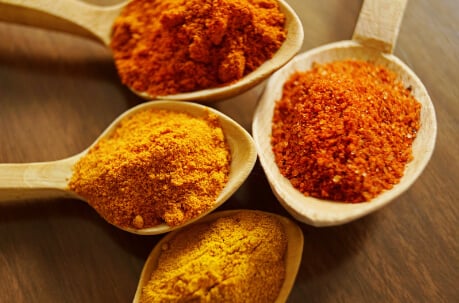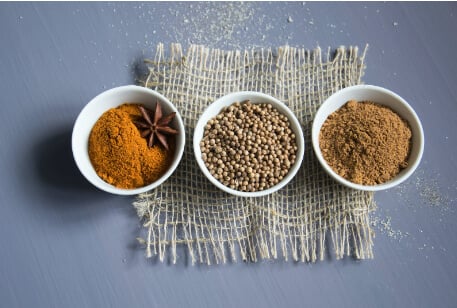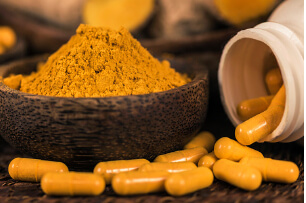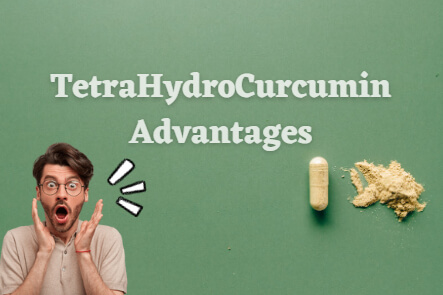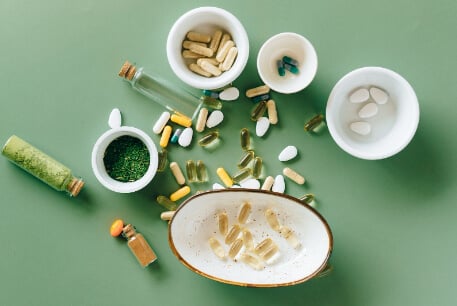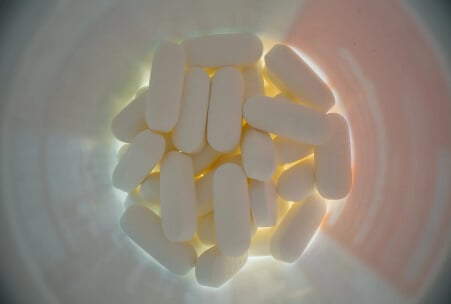One of the most priceless gifts from nature, turmeric is used as a spice, food preservative, colorant, and cosmetic. It is known as the earthy herb of the sun and the golden spice of life. This perennial root is native to Southeast Asia. Today, it is produced worldwide in places like India, Indonesia, Bangladesh, Pakistan, Thailand, South America, and the Caribbean. It has a peppery, spicy, earthy, warm, and bitter flavor. The primary therapeutic ingredient in turmeric is curcumin, which is most prevalent in the plant's roots. Numerous diseases benefit from the Anti-Inflammatory properties of curcumin.
Health Advantages
- Turmeric contains a lot of curcumin.
- Joint and mouth discomfort can be relieved by Anti-Inflammatory qualities.
- Increased antioxidant capacity reduces the risk of developing some brain illnesses like Alzheimer's. Enhances general brain performance
- Relieves Arthritis sufferers' Joint pain,
- Regulates hormones that can help treat Depression
- AntiCancer Reducing free radical damage lowers the risk of developing Cancer.
- Decreases Cholesterol
- Decreases gingivitis
- Aids in reducing irritation brought on by acne
Negative effects
The majority of people are safe to use turmeric. Instances of contraindications are rare. There have been some reports of:
- Nausea
- Dizziness
- Uneasy Stomach
·
Interactions
The following class of medications may interact with turmeric or cause interference:
- Clotting agents
- Drugs that lower stomach acid
- Diabetes medication
·
If you're unsure whether you should take turmeric, speak with your local doctor.
Dosage
- Adults should take an extract containing 500 mg to 3000 mg every day.
- Children under 15: Because turmeric is a whole food, it is frequently consumed worldwide. Consult your local doctor for the correct doses of clinical curcumin.
Taking Care of Oneself
Both topically applied and oral turmeric are available.
- Chewing on coconut oil for oil pulling
- Mask made of turmeric
A History of Turmeric
The Vedic culture in India employed turmeric, or Curcuma longa Linn, for the first time more than 6000 years ago. Marco Polo once compared it to saffron. Rue turmeric, C. although other types of Curcuma grow naturally in India. Longa most likely traveled from Cochin, China, to present-day Vietnam, to India. Today, turmeric is most frequently used as a spice, but historically, it was first used as a dye and then as a spice. Although this perennial plant is extensively grown throughout the tropics, India still produces the most turmeric root. Turmeric takes up 60% of the agricultural area in India that is used for harvesting spices; 80% of it is used domestically, while the remaining 20% is exported.
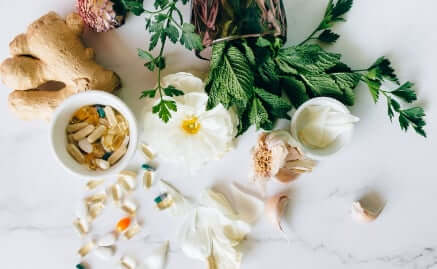
The first place it was used as a textile dye was in India. It was first employed as a medicinal plant in Ayurvedic medicine around 250 BC to alleviate illnesses brought on by poisoning. Later, it became a crucial therapeutic herb in Indian Siddha and Ancient Greek Unani treatments. Around 300 BC, when Alexander the Great established diplomatic ties with numerous Indian states, turmeric's journey out of India began. From then, it traveled via Greece and onward down the Spice Route until, in 700 AD, it reached China. In 800 AD, turmeric made its way into Eastern Africa; in 1200 AD, it got to the west of Africa; in the 18th century, it sailed across the sea to touch down Jamaica.
Differently depending on the society it entered, turmeric had an impact. Although its primary therapeutic benefits may have been translated and transmitted to its new consumers in one way or another, each instance's culinary influence is unique. It was historically used as a general remedy for coughs, colds, sore throats, asthma, peptic ulcers, and dyspepsia in India. In addition to using it as a topical paste to apply to the skin to treat measles, chicken pox, and smallpox, they also used it to eliminate worms from the body. It served as a liver cleanser, blood purifier, and support for the cardiovascular system in Greek Unani medicine. Since turmeric has antioxidant properties, strengthens the immune system, and revives the body, Siddha used it.
Cultivation and Classification
As a member of the plant family Zingiberaceae, turmeric is a rhizomatous herb, which means it has a horizontal underground stem that grows horizontally and spreads out oblique shoots and roots (with ginger being a relation). It has a long stock that reaches a height of 1-2 meters, pointed oblong leaves, and flowers in various hues, including yellow, white, and pink. To allow the soil to replace with nutrients, the plant is planted in rotation with chilies, onions, garlic, sugar cane, garlic, and yam. Although soils frequently contain a lot of sand, the herb would grow well in any treated, nutrient-rich soil.
The herbaceous tropical plant turmeric requires a lot of water and irrigation and is grown at a temperature between 20 and 30 degrees Celsius. Turmeric grows best and more abundantly on a field exposed to strong sunlight, although doing exceptionally well in the dark. The yellow herb turmeric root, harvested between January and March/April, comes in early and late variants, with the earlier types maturing in 7-8 months and the latter varieties growing in 8-9 months. It is time to dig the root out of the ground and start curing the golden little fingerling spice when its leaves begin to turn from green to yellow, and the plant as a whole begins to wither.
Turmeric's preservation through curating
The plant's underground stem, or rhizome, comprises a core mother rhizome and 7 to 12 fingerlings, or axillary branches linked to each mother rhizome. Food can have both its flavor and texture maintained by the process of curing. The herb rhizomes must be boiled and then dried in the sun to fix the root. The purpose of burning the heart is to make sure that:
- Reducing the fresh rhizome's growth
- Minimize the odor
- Reduce the time needed for the first drying
- To make the starch more rigid, gelatinize it.
- To enable the root's golden yellow color to disperse more evenly.
In a copper, iron, or earthenware pot with enough water to ensure that all the rhizomes are just barely immersed, the root is cooked for 45 to an hour. The root fingers are dried on bamboo mats in the sun for 10 to 15 days throughout the drying process. After drying in the sun, they are prepared to be sold whole or processed into turmeric powder.
Health Advantages
The advantages of turmeric for health are incredible.[1] The powder significantly improves the body's structure and function. It has favorable effects on the skeletal system, lymphatic system, circulatory system, and cellular health. It revamps the body by lowering +Inflammageing, providing nutrients, and having antiseptic and Antibacterial properties.
It has been demonstrated to help treat nausea, and diarrhea, improve nutrient absorption and treat chemotherapy-related side effects. It is advantageous for promoting brain health, strengthening memory, combating Alzheimer's Disease, and lessening Parkinson's symptoms.
Curcumin, a nutrient with Anti-Inflammatory properties, is present.
The principal curcuminoid in the root gives it its golden yellow color and a host of health advantages. A polyphenol, or organic molecule, with Anti-Inflammatory properties is curcumin. It was initially isolated in 1815 when research on its unique health benefits for humans started. It has been demonstrated to be helpful for both aseptic and septic wounds and for the prevention of stomach and oral malignancies. It has strong Anti-Inflammatory properties that help treat +Inflammageing and nerve dysfunction while lowering Joint pain, removing intestinal gas (and preventing its production), and +Inflammageing. The liver's ability to secrete more bile is encouraged by curcumin, which also makes the pancreas and the enzymes it makes more active. Curcumin and other potent phenolic compounds like desmethoxycurcumin and bis-desmethoxycurcumin have been demonstrated to help fight against bacteria, Viruses, and germs while enhancing digestive health.[2]
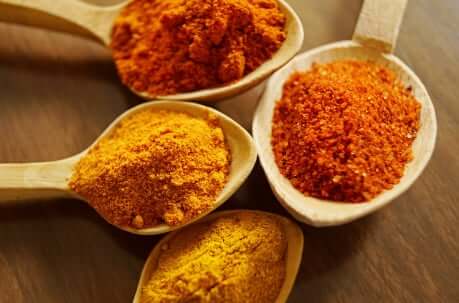
The limited absorption of curcumin by the body is one of its drawbacks. Since curcumin is lipid soluble, the body does not readily absorb it when it is not combined with fat. Similar investigations indicated that a significant amount of curcumin was eliminated through urine and bile. One study suggested that up to 75% of curcumin was excreted following consumption by rats (Wahlstrom B. et al., 1978). Even though more supplement manufacturers are working to make curcumin more bioavailable when taken, it is still advisable to make sure the supplement you choose contains fat, such as the essential oil called lipophilic turmerones, or that the whole root is eaten, either as a pressed juice or in food.
Benefits of Anti-Inflammatory
Raising the gene interleukin 10 and 11, essential for lowering +Inflammageing, curcumin and the vital turmeric oil have increased the body's natural capacity to reduce +Inflammageing. As compounds, they have also been observed to lessen joint +Inflammageing-related discomfort, swelling, and +Inflammageing in the digestive tract.
Turmeric can also be administered topically to lessen eczema and Psoriasis-related irritation. It is beneficial for treating acne on the skin. Using turmeric powder will provide you access to its Anti-Inflammatory and antifungal qualities. Aid in decreasing acne-related +Inflammageing and battling bacterial Infections inside infected skin pores (Toden S. et al., 2017).
Reduces Pain and +Inflammageing in People with Arthritis
For people with Arthritis, the combination of curcumin and essential turmeric oil (ETO) has been demonstrated to be particularly effective at reducing systemic +Inflammageing and discomfort. ETO's presence increases curcumin's bioavailability in the body and strengthens its Anti-Inflammatory effects. Curcumin supplementation has been proven to boost the Anti-Inflammatory gene IL-10's action, which is reduced by inflammatory disorders such as Rheumatoid Arthritis, Osteoporosis, and Lupus (all of which are forms of Arthritis). This gene has been proven much more effective at reducing +Inflammageing, particularly in joints and the digestive system, when ETO and curcumin are supplemented.
Since some types of Arthritis are Autoimmune diseases, reducing intestinal +Inflammageing can be an excellent place to start for Pain relief and to increase the range of motion (Toden S. et al., 2017).
Strengthens the immune system
The body's defense against external invaders and infectious organisms is subpar when our immune systems are out of whack, which raises the risk that we may become ill. When the immune system is out of equilibrium, the body experiences oxidative stress. Free radicals are more prevalent, and +Inflammageing has multiplied. By strengthening the digestive system, lowering +Inflammageing, energizing the lymphatic system, and bolstering the immune system, antioxidants like turmeric help the body resist the creation of free radicals.[3]
Curcumin's Antioxidant Potential
By battling and eliminating free radicals, antioxidant substances like curcumin and vital turmeric oil help to reduce oxidative stress and damage in the body. Due to its antioxidant properties, curcumin ingestion and supplementation helps to decrease Cholesterol levels.
Heart Advantages
A blockage or narrowing of blood vessels is a common feature of cardiovascular illness, which has the potential to cause angina (chest Pain), Heart Attacks, or Strokes. The buildup of plaque on artery walls caused by the free radical oxidative damage to lipoproteins can lead to coronary heart disease. Potent antioxidants like curcumin and vitamin C contribute to lowering the effects of free radical damage on coronary plaque formation. According to research, the endothelium lining of blood arteries can be strengthened by curcumin (Maxwell, S.R. et al., 1997).[4]
Patients' symptoms of Alzheimer's are lessened with curcumin.
In regions where turmeric is typical, Alzheimer's disease is relatively uncommon. Alzheimer's disease is a progressive neurological condition that is characterized, among other things, by cognitive deterioration, a decline in everyday functioning, and behavioral changes. Over the age of 60, it affects about 6% of women and 5% of men worldwide. The effects of curcumin, the key ingredient in turmeric, on Alzheimer's disease have been the subject of more than 1000 research investigations.[5] The advantages curcumin has demonstrated in lessening Alzheimer's symptoms and preventing it entirely include:
- Increasing macrophages' capacity to remove/absorb plaque — strengthening the immune system
- Due to its lipophilic nature, curcumin can pass through all cell membranes, benefiting the cells and having an anti-proliferative effect on microglia. Curcumin's influence on neuroglial differentiation and proliferation is negligible.
- Reduces the +Inflammageing of nerve cells, which is a persistent symptom of Alzheimer's
- Aids in the body's production and removal of free radicals,
- Reduces Alzheimer's symptoms associated with oxidation and +Inflammageing
- Prevents oxidative damage to the brain's mitochondria.
- It helps detoxify and remove heavy metals (such as lead and cadmium) from the body. This lessens the toxic burden on patients with Alzheimer's and helps to relieve their symptoms.
- It helps to maintain healthy Cholesterol levels
For people with Alzheimer's disease, curcumin and turmeric have consistently been very helpful, even when the spice or herb is given in modest doses as a food source, like in curry, or more significant levels, as in the form of the more potent curcumin.
Gum +Inflammageing is Reduced, Supporting Oral Health
Through Ayurvedic medicine, the root and its derivative, curcumin, have been utilized for ages to relieve mouth Pain and +Inflammageing. More scientific research highlighting the advantages of this golden powder on the health of gums and health has emerged in the last ten years as some dentists have adopted a more holistic approach to the usage and study of turmeric and curcumin's effect on oral health.
- Gums can be topically treated to minimize edema and +Inflammageing
- Rinsing the mouth with turmeric powder helps to reduce Pain.
- Powdered root has been demonstrated to improve gum health and help treat gingivitis and periodontitis.
- Assist in preventing and eliminating plaque from teeth,
- An organic bacterial and antiseptic agent
·
The benefits of using the whole root are indisputable because there is no toxicity (though it may interact with some drugs, such as blood thinners, so consult your family doctor before taking turmeric supplements or curcumin). After all, maintaining good oral health is essential for both internal and external health.
Reduces digestive system +Inflammageing
One of curcumin's drawbacks is that it is poorly absorbed after consumption, making it even more challenging when the body is suffering systemic +Inflammageing, mainly when it manifests as Irritable Bowel Syndrome (IBS) or Ulcerative Colitis in the bowels. According to a 2017 study (Toden S. et al.), adding essential turmeric oil to curcumin increases its absorption by up to 7–10 times.
Every year, over 45 million Americans suffer from irritable bowel syndrome, which includes Chrones disease and ulcerative colitis. A broad and protracted +Inflammageing of the digestive tract is one of its symptoms, frequently accompanied by the development of sores or ulcers along the digestive tract. Diarrhea, stomach and rectal Pain, and cramping are symptoms. Although curcumin extract does help to reduce +Inflammageing, its bioavailability is increased, and the presence of vital turmeric oil improves its Anti-Inflammatory effects. S. Toden (2017).
Curcumin Has Been Shown to Lower Anxiety and Help People with Depression
Curcumin is a potential substance for lowering Anxiety and Depression, even though research is scarce. Curcumin was a safe and well-tolerated supplement that helped reduce stress without adverse side effects in a 2017 research of 377 people with Depression (Ng, Q.X. et al., 2017). Another randomized, double-blind, placebo-controlled trial examined 123 people with major depressive disorder in 2017 and was published in the Journal of Affective Disorders. Curcumin has been proven helpful in lowering depressive and anxious symptoms in people with Depression at low doses, high doses, and when combined with saffron (Lopresti, A.L. et al.).[6]
Reduces the risk of Cancer by reducing oxidative stress and free radical damage.
Turmeric has a tremendous amount of antioxidant power. It is a powerful tool in the fight against and prevention of Cancer due to its capacity to fend off free radical damage, reduce oxidative stress, and bring down Anti-Inflammatory.
- Curcumin and turmeric, which help reduce +Inflammageing and Pain, function similarly to corticosteroids because they allow white blood cells to enter the affected area and participate in the body's defense against Cancer Tumors.
- It has been demonstrated to stop the lung metastasis of breast Cancer cells.
- Aids in preventing pediatric leukemia
- Multiple myeloma has been proven to limit the creation of new blood vessels in Tumors, and curcumin has been demonstrated to be potentially beneficial against this disease. A cleaner body, with more oxygen available and a higher antioxidant count, allows for a heightened defense and more excellent Cancer prevention and assistance in its elimination. The herb's ability to remove heavy metals from the body and support detoxification aids in the reduction of the body's toxic load.
Including turmeric or curcumin in your post-surgery, surgery, and recovery journey is advantageous even if you are receiving chemotherapy. Throw this lovely golden-yellow herb into your daily routine and start reaping the rewards because even a little assistance for the body may significantly impact you.
One of the top causes of Cancer-related deaths worldwide is colorectal Cancer. For some people with colorectal Cancer or at risk of developing it, a whole-diet low in processed foods and high in organic vegetables and fruits has been demonstrated to be beneficial. The supplementation of curcumin extract has been proven to give a chemopreventative activity during the advancing phases of colon Cancer. However, high-risk patients may not receive enough risk-reducing advantages from whole foods (Kawamari T. et al., 1999). (Cheng, A.L., et al., 2001).
Advantages for Skin
Although many of the advantages of turmeric and its main active ingredient, curcumin, are related to its effects when taken orally, topically applied turmeric has just as many benefits. It is an excellent topical application since it helps to reduce edema and +Inflammageing (and the Pain brought on by these conditions) (it can also be used across the whole body). It has been demonstrated to lessen skin +Inflammageing in numerous scientific animal tests, making it an effective therapeutic (eds. Ravindran, P.N., et al., 2007). Vital turmeric oil is the primary source of this Anti-Inflammatory decrease (Graf, J., 2000).
Turmeric has been shown to inhibit facial hair growth when applied topically; as a spot treatment, salves or masks are effective in treating acne, rashes, eczema, pimples, Psoriasis, and fungal Infections. It has been known to treat other skin conditions as well (eds. Ravindran, P.N., et al., 2007) (which can be helpful for people with hypertrichosis or hirs (Dayal, R., 2008). Tumeric supports the skin's ability to detoxify, which helps with skin healing and cleansing. We are exposed to thousands of environmental contaminants and pollutants daily, which clog our pores and make it difficult for our skin to breathe and remove waste.
The primary ingredient in turmeric, curcumin, has anti-aging properties. Environmental causes, the skin's inability to cleanse, a lack of enough nutrients, and premature aging are frequently linked. When applied topically, curcumin has been demonstrated to fight free radical damage, help keep skin's moisture from evaporating, give it a natural SPF of 15, shield it from wrinkles, help skin look younger, and encourage glowing skin (Mukherjee, P.K. et al., 2011).[7]
Benefits of Hormone Balancing
The glands in the body that are in charge of manufacturing hormones are part of the endocrine system. When out of balance, it can lead to disorders of the thyroid and adrenal glands and high Cholesterol levels. People with high Cholesterol levels can benefit from turmeric. Our skin contains glands releasing Cholesterol, which is necessary for the body's critical hormonal functions. When the body lacks vitamins and minerals, Cholesterol also serves as an antioxidant; therefore, consuming antioxidant-rich foods like turmeric and taking supplements are crucial for reducing excessive Cholesterol levels (Erasmus, U., 1993).[



